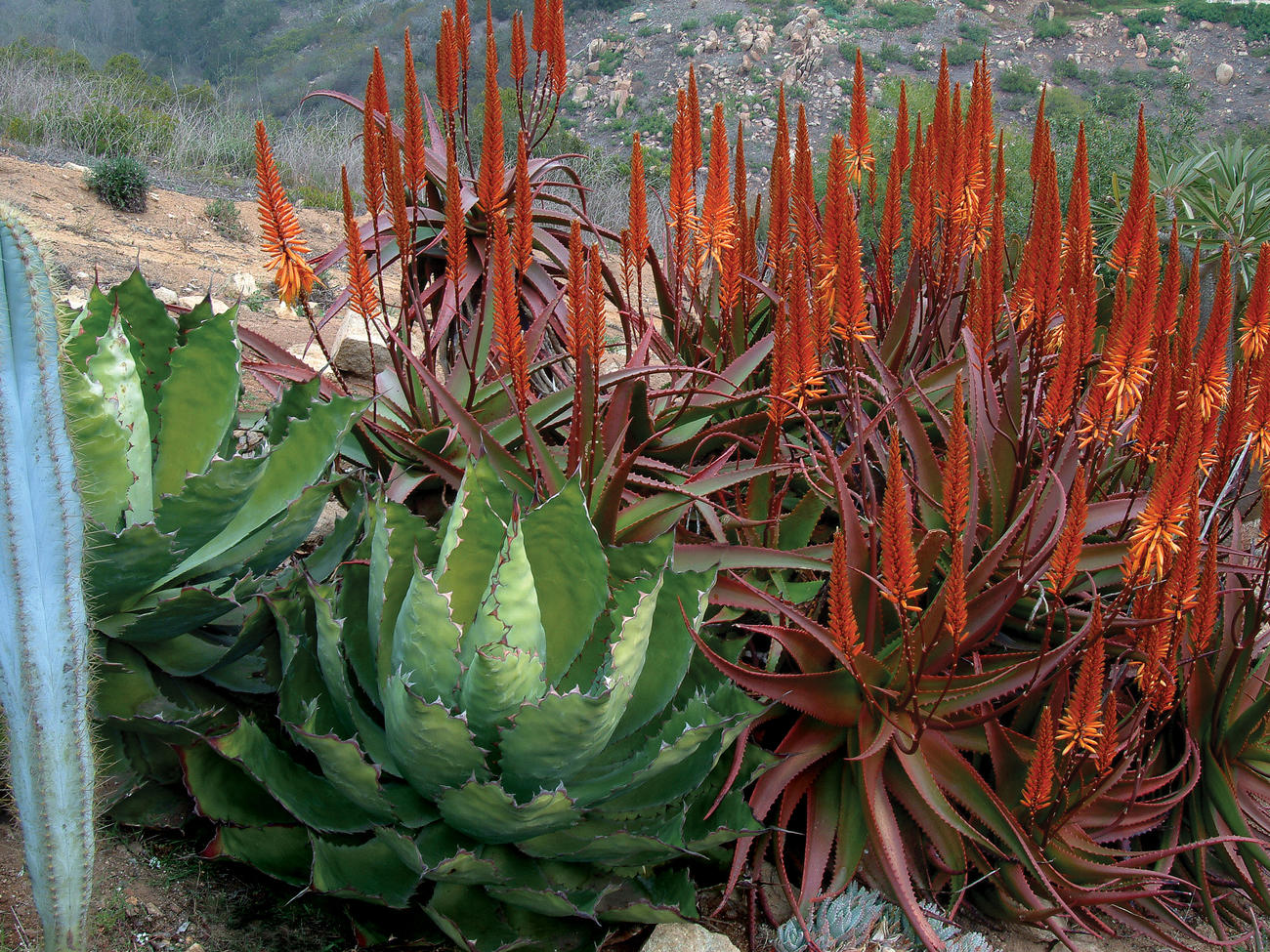
Agaves: Living Sculptures
Use these versatile plants for drama in pots and sunny gardens

Bob Wigand
Agaves are living contradictions. Their perfect shapes – they’re often likened to giant stylized roses or artichokes – make these strapping plants seem like the essence of order. But their wicked spines and leathery leaves remind you that the New World natives are plenty wild. That unusual combination of fierceness and symmetry makes agaves very useful in the West’s most arid gardens. “These living sculptures provide incredible design opportunities,” says Janet Rademacher of Mountain States Wholesale Nursery in Glendale, Arizona.
Landscape uses
In the desert, the muscular texture of agaves is a welcome contrast to the fine leaves of acacia, dalea, and most other trees, shrubs, and perennials. In Southern California, agaves can add drama to lavender, rosemary, and other narrow-leafed Mediterranean plants.
Agaves also give structure to beds of wispy wildflowers. Penstemon and desert marigold look twice as flowery and feminine with a few of these macho characters in their midst. The same goes for clarkia and poppies in California.
